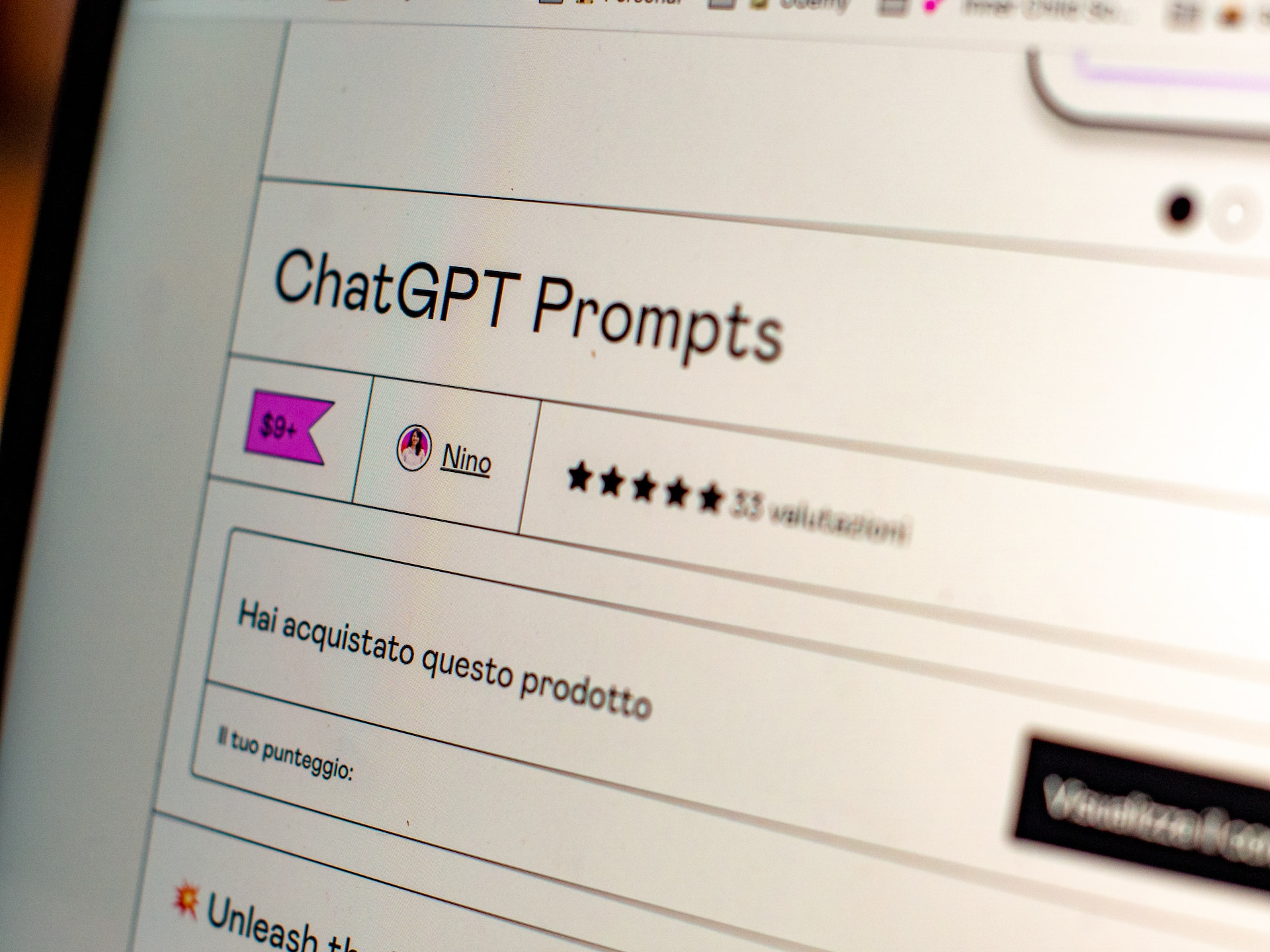Chatbots have become increasingly popular in recent years, revolutionizing the way businesses interact with their customers. Understanding the chatbot technology is crucial in order to effectively harness its potential and leverage it for business growth. Identifying the business goals and objectives is the first step towards developing a successful chatbot strategy.
The needs and preferences of the target audience must also be taken into consideration during the design process. This blog post will explore the key elements to consider when designing a comprehensive chatbot strategy and provide insights on developing an effective implementation plan. Additionally, we will discuss how to measure and optimize chatbot performance to ensure its effectiveness in meeting business objectives.
Understanding The Chatbot Technology
The rise of technology has revolutionized the way businesses interact with their customers. One such technological advancement that has gained significant popularity is chatbots. Chatbots, powered by artificial intelligence, have become an integral part of the business landscape. They are programmed to simulate human conversation and assist users in resolving their queries, providing information, and even closing sales. In this blog post, we will delve into the world of chatbot technology, exploring its functionalities, benefits, and how businesses can leverage its potential.
Chatbots are designed to understand and respond to user queries in a conversation-like manner. They use natural language processing (NLP) algorithms to comprehend the meaning behind users’ messages. By analyzing keywords and phrases, chatbots can provide relevant and accurate responses, simulating human-like interactions. The ChatGPT (Chat Generative Pre-trained Transformer) model is one such example of a sophisticated chatbot technology.
Deploying chatbots in the business environment can bring numerous advantages. Firstly, they offer businesses the opportunity to provide round-the-clock customer support. Unlike human agents, chatbots are available 24/7, ensuring prompt and consistent assistance. Additionally, chatbots can handle multiple queries simultaneously, resulting in quicker response times and enhanced customer satisfaction. Moreover, chatbots can be seamlessly integrated with various platforms and social media channels, enabling businesses to extend their services across diverse platforms.
| Benefits of Chatbot Technology |
|---|
|
|
|
|
Businesses can leverage chatbot technology by incorporating it into their business processes. One of the primary use cases of chatbots is customer support. By integrating chatbots into the company’s website or messaging applications, businesses can automate customer inquiries and address common issues. This not only saves time but also frees up human agents to focus on more complex tasks. Furthermore, chatbots can be utilized for lead generation, personalized product recommendations, and even conducting surveys or collecting feedback.
In a nutshell, understanding the capabilities and potential of chatbot technology is crucial for businesses aiming to deliver exceptional customer experiences and streamline their operations. By embracing this advanced technology, companies can gain a competitive edge, foster customer loyalty, and optimize their overall efficiency. In the next blog post, we will discuss the importance of identifying business goals and objectives before implementing chatbot solutions.
Identifying The Business Goals And Objectives
When it comes to developing a successful business plan, one of the first steps is to identify the business goals and objectives. This crucial step will lay the foundation for all future decisions and strategies, ensuring that the business is moving in the right direction. Without clear goals and objectives, a business can easily lose its focus and become ineffective in achieving its desired outcomes.
Identifying the business goals and objectives involves understanding what the company aims to achieve in both the short and long term. Short-term goals are usually focused on immediate outcomes and can include things like increasing sales, improving customer satisfaction, or launching a new product or service. Long-term goals, on the other hand, are more strategic in nature and might involve expanding into new markets, becoming a market leader, or enhancing brand reputation.
To effectively identify the business goals and objectives, it is crucial to conduct a thorough analysis of the company’s strengths, weaknesses, opportunities, and threats (SWOT analysis). This analysis will help identify internal factors that can support or hinder the achievement of goals, as well as external factors that can present opportunities or threats to the business.
- Internal strengths can include a strong customer base, a talented workforce, or unique intellectual property, all of which can be leveraged to achieve business goals.
- Internal weaknesses, on the other hand, can include a lack of financial resources, outdated technology infrastructure, or poor operational efficiency, which may need to be addressed to support the achievement of goals.
- External opportunities can be identified through market research and include emerging trends, new customer segments, or untapped market niches that the business can capitalize on.
- External threats may include intense competition, changing regulations, or economic downturns that can impact the business and its ability to achieve its goals.
By understanding these internal and external factors, businesses can effectively align their goals and objectives with their capabilities and the opportunities available to them. This alignment is crucial in developing a realistic and achievable business plan that sets the company up for success.
| Benefits of Identifying Business Goals and Objectives: |
|---|
| 1. Focus and Direction: By clearly defining the goals and objectives, businesses can ensure that all efforts and resources are directed towards achieving these outcomes. This prevents wasted time and resources on activities that do not contribute to the business’s overall success. |
| 2. Decision-Making: When faced with various opportunities and challenges, having well-defined goals and objectives allows businesses to make informed decisions that are aligned with their overall vision and mission. |
| 3. Motivation and Alignment: Clearly communicated goals and objectives motivate employees and align their efforts towards a common purpose. This fosters teamwork and a sense of ownership, leading to increased productivity and employee satisfaction. |
| 4. Evaluation and Measurement: Having clear goals and objectives makes it easier to evaluate the performance and progress of the business. Key performance indicators (KPIs) can be established to measure success and identify areas for improvement. |
In conclusion, identifying the business goals and objectives is a crucial step in developing a successful business plan. By conducting a thorough analysis and aligning the goals with the company’s capabilities and opportunities, businesses can set themselves up for long-term success. This clarity of direction provides focus, facilitates decision-making, motivates employees, and enables the evaluation and measurement of the business’s performance. With well-defined goals and objectives, businesses can stay on track and achieve their desired outcomes.
Determining Target Audience And User Needs
Determining the target audience and user needs is a crucial step in developing a successful chatbot. Without a clear understanding of who your target audience is and what their needs are, it would be difficult to design an effective chatbot strategy. By identifying the target audience, you can tailor the chatbot’s functionalities and content to meet their specific requirements.
To determine the target audience, it is important to conduct thorough research and analysis. Start by defining the demographics of your potential users, such as age range, gender, location, and occupation. Understanding these basic demographics can help you create personalized experiences for your users.
Once you have defined the demographics, it is important to delve deeper into understanding the specific needs and pain points of your target audience. What are their common challenges, questions, or concerns? What are their goals and aspirations? Knowing these factors will help you create a chatbot that addresses their specific needs and provides valuable solutions.
- Identify the demographics of your target audience, including age, gender, location, and occupation.
- Understand the pain points, challenges, and goals of your target audience.
-
Determining Target Audience And User Needs Step 1: Define the demographics of your potential users Step 2: Understand the specific needs and pain points of your target audience Designing A Comprehensive Chatbot Strategy
Designing a comprehensive chatbot strategy is crucial for businesses looking to leverage this technology to improve customer service and streamline operations. Chatbots, powered by AI and machine learning algorithms, are becoming increasingly popular as a way to automate customer interactions, provide instant support, and gather valuable insights. In this blog post, we will explore the key steps involved in designing an effective chatbot strategy that aligns with the business goals and objectives.
Identifying the Business Goals and Objectives: Before diving into designing a chatbot strategy, it is important to clearly define the business goals and objectives that the chatbot will help achieve. Whether it is enhancing customer experience, reducing customer support costs, or increasing sales, having a clear understanding of the desired outcomes will guide the design and implementation process.
Determining Target Audience and User Needs: Understanding the target audience and their needs is essential for building a chatbot that delivers relevant and personalized experiences. Conducting market research, analyzing customer feedback, and creating user personas will help identify the pain points and expectations of the target audience. This information will inform the design of the chatbot and enable it to provide tailored solutions and recommendations.
Developing an Effective Chatbot Implementation Plan: Once the business goals, objectives, target audience, and user needs have been identified, it is time to develop a comprehensive implementation plan for the chatbot. This plan should outline the technical requirements, integration with existing systems, training data collection, and testing methodologies. Moreover, it is crucial to define key performance indicators (KPIs) that will be used to measure the success of the chatbot and determine if it is meeting the defined objectives.
Measuring and Optimizing Chatbot Performance: After the chatbot has been implemented, it is necessary to continuously measure and optimize its performance. Collecting data on user interactions, user satisfaction levels, and conversion rates will provide insights into the chatbot’s effectiveness. This data can be used to identify areas for improvement, refine the chatbot’s responses, and enhance the overall user experience. Regular monitoring and analysis of chatbot performance will help maximize its potential and deliver value to the business.
Developing An Effective Chatbot Implementation Plan
In today’s digital age, businesses are constantly seeking innovative ways to improve customer experiences and streamline their operations. One technology that has gained significant popularity in recent years is chatbots. These conversational AI tools have the potential to revolutionize the way businesses interact with their customers, automate processes, and provide personalized solutions. However, implementing a chatbot without a well-thought-out plan can lead to underutilization or even failure. In this blog post, we will delve into the key steps involved in developing an effective chatbot implementation plan.
Step 1: Define your chatbot’s objectives and goals.
The first and most crucial step in developing a chatbot implementation plan is to clearly define the objectives and goals of your chatbot. Are you looking to enhance customer support, automate sales processes, or improve lead generation? Identifying the specific purpose of your chatbot will help guide the entire implementation process and ensure its success. It is essential to align the chatbot’s goals with your overall business goals and ensure that it adds value to your customers’ experience.
Step 2: Identify your target audience and user needs.
A key factor in developing a successful chatbot implementation plan is understanding your target audience and their needs. Conduct thorough market research to identify the demographics, preferences, and pain points of your customers. This information will enable you to design a chatbot that caters to their specific requirements and delivers personalized solutions. Tailoring your chatbot to meet the expectations of your target audience will enhance user engagement and satisfaction.
Step 3: Choose the right platform and technology.
Once you have determined your chatbot’s objectives and target audience, the next step is to choose the right platform and technology for implementation. There are various chatbot development platforms available, each with its own features and capabilities. Consider factors such as ease of use, scalability, integrations with other systems, and natural language processing (NLP) capabilities. Selecting a platform that aligns with your business requirements and technical capabilities is crucial for a successful chatbot implementation.
Step 4: Design a conversational flow and user interface.
The chatbot’s conversational flow and user interface are key elements that contribute to a seamless user experience. Determine the various user journeys and conversation paths based on different user inputs and scenarios. Creating a user-friendly and intuitive interface will enhance engagement and ensure that users can easily navigate through the chatbot’s functionalities. Incorporate interactive features such as buttons, quick replies, and automated suggestions to make the conversation more interactive and efficient.
Step 5: Integrate with existing systems and perform thorough testing.
An effective chatbot implementation plan involves integrating the chatbot with your existing systems, such as customer relationship management (CRM) software or e-commerce platforms. This integration enables the chatbot to access and retrieve relevant customer data to provide personalized recommendations or support. Additionally, thorough testing is essential to identify and resolve any bugs or issues before the chatbot is deployed. Conduct user testing sessions to gather feedback and make necessary improvements to ensure a smooth implementation.
Step 6: Monitor, measure, and optimize performance.
Once your chatbot is deployed, monitoring and measuring its performance is crucial for continuous improvement. Utilize analytics tools and track metrics such as user engagement, conversion rates, and customer satisfaction. Analyze the data to understand user behavior, identify bottlenecks or areas for improvement, and optimize the chatbot’s performance accordingly. Regularly update and enhance your chatbot’s capabilities to adapt to evolving customer needs and preferences.
In conclusion, developing an effective chatbot implementation plan involves a series of strategic steps. By clearly defining objectives, understanding the target audience, choosing the right platform, designing a seamless user experience, integrating with existing systems, and continuously monitoring performance, businesses can successfully leverage chatbot technology to enhance customer experiences and achieve their business goals.
Measuring And Optimizing Chatbot Performance
As chatbot technology continues to evolve and become a vital part of businesses, it is essential to measure and optimize the performance of these intelligent conversational agents. By doing so, businesses can ensure that their chatbots are providing valuable, efficient, and personalized experiences to their users. In this blog post, we will explore the importance of measuring chatbot performance and highlight some key strategies to optimize it.
One of the first steps in measuring chatbot performance is to establish clear metrics and goals. By defining specific Key Performance Indicators (KPIs) such as customer satisfaction ratings, response time, and completion rates, businesses can assess the effectiveness of their chatbots. Additionally, it is crucial to align these metrics with the overall business objectives and desired outcomes. By doing so, organizations can gain valuable insights into customer interactions and identify areas for improvement.
Another strategy for optimizing chatbot performance is continuous monitoring and analysis. By regularly analyzing chatbot conversations and user feedback, businesses can identify patterns, trends, and common pain points. This information can be used to fine-tune the chatbot’s responses, update its knowledge base, and enhance its natural language processing capabilities. Additionally, monitoring chatbot performance allows businesses to identify any technical issues or bottlenecks that may hinder its performance.
- Using A/B testing is another effective approach to optimize chatbot performance. By comparing different versions of the chatbot, businesses can determine which approach or dialogue flow yields better results. This iterative testing method allows organizations to make data-driven decisions and improve the chatbot’s overall performance. Moreover, user feedback and sentiment analysis can further enhance the effectiveness of A/B testing, providing valuable insights into users’ preferences and needs.
-
Benefits of Measuring and Optimizing Chatbot Performance Enhanced Customer Experience: Measuring chatbot performance allows businesses to identify areas of improvement and optimize the conversational experience. By delivering accurate and relevant information, chatbots can enhance customer satisfaction and drive engagement. Improved Efficiency: Optimizing chatbot performance ensures that the conversational agent is efficiently handling customer queries and providing appropriate solutions. This reduces the need for manual intervention and enhances operational efficiency. Cost Savings: By optimizing chatbot performance, businesses can reduce the reliance on human agents and automate customer support processes. This results in cost savings and allows human agents to focus on more complex tasks or specialized support. In conclusion, measuring and optimizing chatbot performance is crucial for businesses to provide seamless and valuable experiences to their users. By defining clear metrics, continuously monitoring performance, conducting A/B testing, and analyzing user feedback, organizations can enhance the effectiveness and efficiency of their chatbots. The benefits of these optimization practices include improved customer experience, increased efficiency, and cost savings. As chatbot technology continues to advance, investing in the optimization of chatbot performance will undoubtedly be a key differentiator in the competitive business landscape.
Frequently Asked Questions
What is chatbot technology?
Chatbot technology refers to the use of artificial intelligence and machine learning algorithms to create virtual assistants that can interact with humans through textual or auditory methods.
Why is it important to identify business goals and objectives for chatbot implementation?
Identifying business goals and objectives helps to ensure that the chatbot implementation aligns with the overall strategy of the organization and addresses specific needs or challenges that the business is facing.
How do you determine the target audience and user needs for a chatbot?
Determining the target audience and user needs involves conducting market research, analyzing customer data, and gathering feedback from potential chatbot users. This helps to understand the demographics, preferences, and pain points of the target audience.
What does it mean to design a comprehensive chatbot strategy?
Designing a comprehensive chatbot strategy involves considering various aspects such as the chatbot’s purpose, functionality, conversational design, integration with existing systems, and user experience. It aims to create a well-rounded and effective chatbot solution.
How do you develop an effective chatbot implementation plan?
Developing an effective chatbot implementation plan involves outlining the project scope, setting milestones and timelines, allocating resources, and defining key performance indicators (KPIs) to measure the success of the implementation.
Why is it important to measure and optimize chatbot performance?
Measuring and optimizing chatbot performance helps to identify areas for improvement, evaluate the chatbot’s effectiveness in achieving its intended goals, and enhance the user experience. Continuous monitoring and analysis enable iterative refinement of the chatbot.
What are some metrics used to measure chatbot performance?
Some common metrics used to measure chatbot performance include user engagement, completion rate of conversations, customer satisfaction ratings, resolution time, and cost savings or revenue generated through chatbot interactions.









